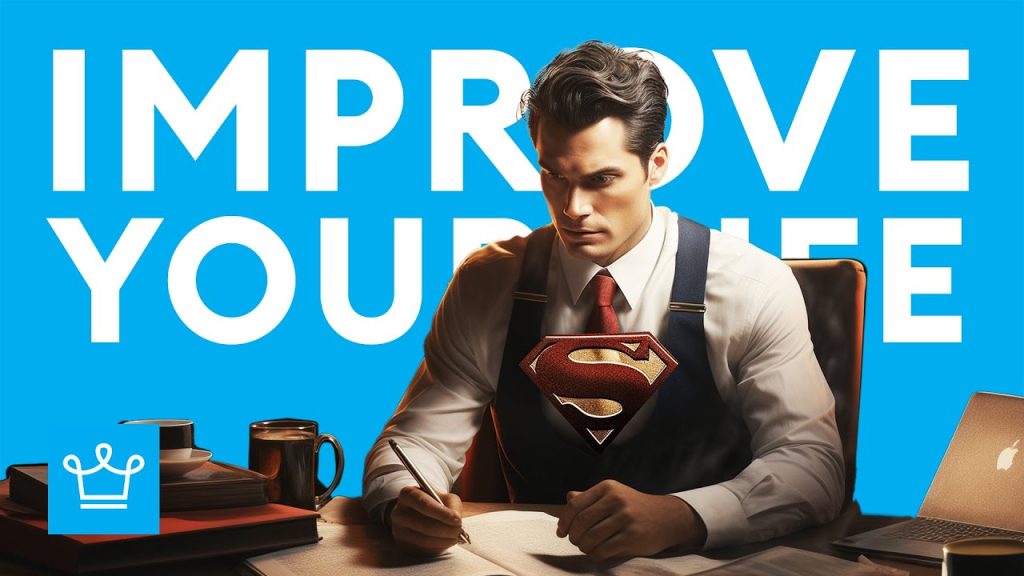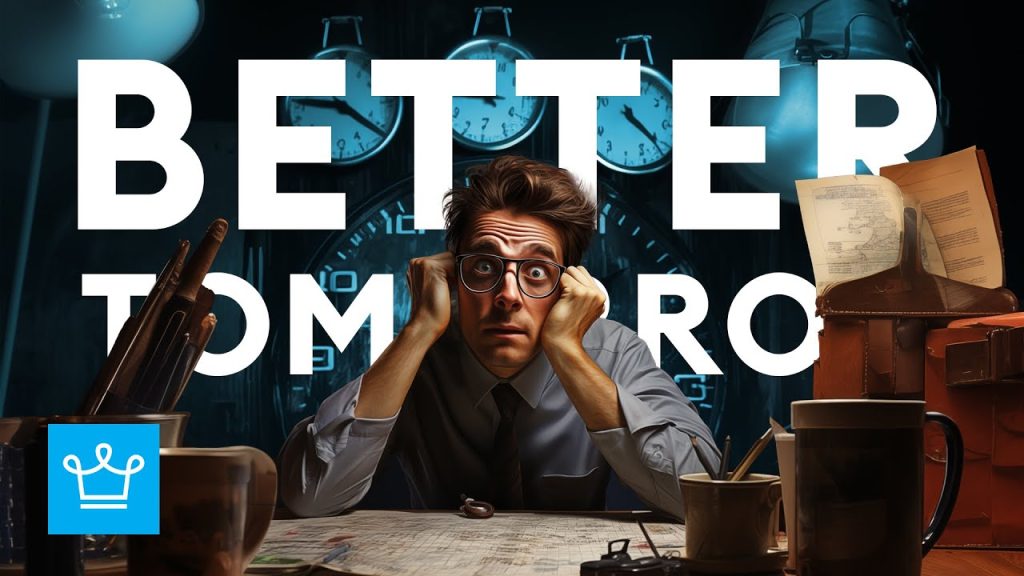Brothers Turned Enemies – The Story of Adidas & Puma
Adidas and PUMA are household names, but you probably don’t know the story of how these successful companies came to be. It’s a story of brothers who started out as business partners and ended up as bitter enemies and rivals. If you’ve ever tried to work with family, maybe you understand how this could happen, but these brothers took it to a whole ‘nother level. Today we’re going to tell the story of the enemy brothers who founded Adidas and PUMA. There’s definitely something to learn from the success of each of these brothers, so let’s start at the beginning.
- Who are the Dassler Brothers?
- Beginnings
- 1936 Olympics
- From Partners to Enemies
- Adidas after the Split
- PUMA after the Split
- Adidas and PUMA Today
- The Lesson
- The Quote
- Question
If you are one of the Aluxers who prefer visuals over the dull text, here’s all of the content of this article covered in our Youtube video:
With that out of the way, let’s jump straight into the article!
Who are the Dassler Brothers?
Adolf and Rudolph Dassler were brothers who were born in the small town of Herzogenaurach [Hers-ah-gin-or-ick], Germany, about 12 miles outside Nuremberg. Rudolf, who was born in 1898, was two years older than his brother. The brothers went by the nicknames Rudi and Adi. Their family came from a long line of weavers, but once the textile industry was overtaken by industrialization, Rudi and Adi’s father Christoph learned the art of shoemaking.
In 1913, Adi began an apprenticeship as a baker, but he was much more interested in athletics. After completing his apprenticeship, he decided against being a baker and instead began to learn about shoemaking from his father. He began thinking about how different types of shoes could potentially affect how athletes perform in different sports. After serving in the army for over a year at the end of World War I, Adi decided to start his own shoemaking business that focused on innovative athletic footwear.
Beginnings
Adi started the business in his mother’s laundry room, but he had many challenges in the beginning. Germany was devasted after the war, and there were very few sources of materials or machines. But Adi was creative and resourceful. He scavenged debris left over from the war to find materials he could use such as army helmets with leather that could be used for soles and parachutes that could provide silk for slippers.
He also created a leather milling machine that could be powered by a stationary bicycle instead of electricity. Adi had a strong vision for a unique shoe company that would focus on specialized shoes for various sports. He was constantly experimenting with innovative designs and materials like shark skin and kangaroo leather to see what would be most effective for different sports.
Rudi, on the other hand, had planned on becoming a police officer after the war but saw promise in his brother’s shoe business and eventually decided to join him on July 1, 1923. They officially opened the Dassler Brothers Sports Shoe Factory one year later and began making football boots and track shoes with hand-forged spikes.
By 1926, they had moved the company out of the family home and were producing 100 shoes a day with a staff of 25 people. Both brothers joined the Nazi party in May 1933, and Adi saw the opportunity to expand production by supplying shoes to sports clubs in the Hitler Youth movement. In 1934, 34-year-old Adi married 16-year-old Käthe [Kate-uh] Martz, which would lead to problems later on, but more about that in a minute. The brothers’ would experience their big break two years later.
1936 Olympics
Joseph Waitzer, the coach of the German Olympic track and field team, became an early fan of their specialized shoes. He became a vital consultant for the brothers, and this relationship gave them unique access to the athletes at the 1936 Berlin Olympics. Athletes had worn the brothers’ shoes in the 1928 and 1932 Olympics, but the Berlin Olympics gave them the opportunity to showcase their products in their home country.
However, their greatest exposure came from American Jesse Owens, who accepted a pair of shoes from Adi and went on to win four gold medals while wearing the shoes. This led to a major spike in business internationally, and by 1938 their company was producing 1,000 pairs of shoes a day with specific designs for 11 different types of sports. But then World War 2 started and everything changed.
Resource: What Kind of Men Do Female Athletes Date?
From Partners to Enemies
While Rudolf was conscripted into the army, Adi was permitted to remain as the head of the factory. Rudi resented this and thought that his younger brother was trying to take over control of the company, which he very well may have been. Rudi even threatened to have the factory shut down just so that his brother would also have to go to war.
Although Adi continued to make shoes, the majority of the production was geared toward weapons and supplies for the war effort. Near the end of the war, Rudi defected from the army but was caught and arrested. He was in prison for about a month before the Allied liberation in May 1945.
After the war, tensions got even worse between the brothers. Rudi was still angry at how Adi had taken over during the war, and the brothers also disagreed on the focus of the business. While Adi was more concerned with developing the best shoes, Rudi was more focused on profitability and cash flow. Rudi also thought Adi’s wife was interfering with the business too much, and personal conflicts bled into the business as there was constant bickering in the household where Adi, Rudi, their wives, and their mother all lived.
The final breaking point may have been when the brothers were investigated for their ties to the Nazi party and they each tried to save themselves and threw each other under the bus. In 1948, Rudolf left along with one-third of the staff and went to the other side of the river in their small town, where he started his own shoe company, which was initially called Ruda and then PUMA. After the brothers were done splitting the assets of their business, they never spoke again.
Adidas after the Split
Adi Dassler named his new company Adidas after a shorter form of his name. In March 1949, Dassler came up with the idea of the “three stripes” trademark to set his shoes apart from all others. His passion for creating the optimal shoe for each specific sport quickly paid off as athletes and coaches around the world paid attention to his innovations and purchased his shoes in great number.
Adi became known as the “national shoemaker” as his shoes were worn by the German National Football Team and many other German athletes. In 1952, Adi expanded beyond shoes with a sports bag followed by clothing, balls, and a number of other products, including the first track and field warm-up suit, all featuring the distinctive three stripes.
By the 1960s, Adidas was the largest producer of sports shoes worldwide with 22,000 pairs of shoes produced per day in a total of 16 factories. In the 1972 Olympic games, 80 percent of the track athletes that won gold medals were wearing Adidas shoes. Adi never lost his innovative spirit and continually evolved his products. Before his death in 1978, he registered hundreds of patents to protect his ideas from his competitors, including his brother’s company PUMA. This is how Adidas and Puma were linked.
PUMA after the Split
Rudolf established PUMA and focused on developing a football boot with screw-in studs that he called the Super Atom. Although his shoes were worn by many people throughout Germany and a number of Olympic athletes, he struggled to get traction internationally. Rudi paid German sprinter Armin Hary [Har-ee] to wear PUMAs in the 100 meter sprint in the 1960 Summer Olympics, and he won gold wearing PUMAs but wore Adidas shoes for the medal ceremony, which infuriated both brothers.
Rudolph created a much better partnership with Brazilian football legend Pele, who was wearing PUMAs when he helped his team win the World Cup in 1962 and 1970. In 1967, the PUMA cat logo was created, and the company expanded beyond shoes to other types of athletic apparel. Just seven years later, Rudolf passed away, leaving PUMA in the hands of his son, Armin, who was able to increase the popularity of the brand worldwide.
Adidas and PUMA Today
In 1989, Adi and Kathe’s daughters made the difficult decision to sell Adidas as the sports shoe market became oversaturated and Adidas was losing millions of dollars a year. It wasn’t until the company was listed on the stock market in 1985 that it began to bounce back. In 2006, Adidas bought its competitor Reebok for 3.8 billion dollars. In 2018, Adidas had 24.5 billion in sales revenue, and the company continues to maintain its status as the second largest sporting goods producer in the world behind Nike.
PUMA went public in 1986, but after a period of poor sales, Rudolf’s sons sold their father’s company in 1989, the same year Adidas was sold. Sales have been up and down in the years since, but in 2007 the brand was purchased by the French conglomerate PPR, which also owns Gucci.
The brand seems to be on the verge of a major resurgence after hiring Rihanna as Creative Director in 2014, launching a new line with Selena Gomez in 2018, signing the top two picks of the 2018 NBA draft to contracts, and naming Jay-Z as the creative director for PUMA basketball. None of the Dassler family members have any connection to either company and are hoping to put the family rivalry behind them.
Resource: Most Expensive Gucci Products | Top 10
The Lesson
One lesson we can learn from Adi and Rudi’s story is how important passion is when undertaking any venture. If you are focused solely on the bottom line and driving profits, you may find success, but that success will be compounded if it’s supported by a true passion for the product or service you are developing and your ultimate goal. And one more thing—it may not be a good idea to mix business and family, but if you decide to go that route, make sure you have clear lines of communication and defined expectations to help avoid unnecessary conflict.
For some inspiration from the man behind Adidas’ number one competitor, check out Shoe Dog, a memoir by the creator of Nike, Phil Knight. This fascinating story of how Knight built the world’s most successful athletic shoe company has more than 30,000 five-star reviews on Audible. And you can check it out yourself without worrying about the 28 dollar price tag.
The Quote
While researching his story, we’ve come across this simple yet inspiring quote we’d like to share with you that goes like this:
“Innovate – don’t imitate.”
These words from Adolf Dassler remind us how important it is to be leaders instead of followers when it comes to creating and driving progress.
Question
Now that we’re wrapping up this story, we’d like to know: Do you think Adidas will ever be able to reclaim the top spot among sporting goods producers or will Nike always be king? Let us know what you think in the comments.






